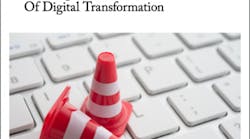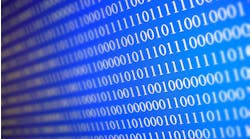This excerpt comes from this new Special Report. Click the cover to get the full version.
Like everything else in the industrial universe, cleaning tools and techniques have changed dramatically with the dawn of digital approaches and the workplace and lifestyle changes brought on by recent global events. Change, of course, is good, even when it is prompted by challenges.
Working smarter with the help of data insights benefits everyone—from business owners to plant personnel to the ultimate end users. As we are capable of more accurately predicting industrial needs and outcomes, we can refine our business strategies, supercharge our efficiency, protect our workforces and run cleaner operations. But it helps to have experts lead the way. Here, find a Q&A with Essity Regional Marketing Manager for Industry Sue Serveiss.
Smart Industry: How have demands for industrial cleaning changed throughout the pandemic? Are these changes here to stay or will they revert in a post-pandemic world?
Serveiss: The COVID-19 pandemic highlighted the importance of ensuring proper hygiene compliance in industrial facilities to help prevent the spread of illness. Around the world, cleaning protocols had to be enhanced overnight, and cleaning teams were challenged to do more with the same, or even less, resources. In manufacturing, employees were considered essential and were required to work within their facilities (remote work is often not feasible). This sparked a new hygiene standard within these facilities. Those in charge of clean- ing them implemented additional requirements and rigorous protocols to prevent infection and reduce the risk of absenteeism. Evidence suggests heightened expectations and the added pressure on industrial cleaning teams is here to stay. In an Essity survey conducted in 2021, 85% of respondents said they expect to see increased cleaning and sanitizing compared to pre-pandemic life. Facility managers can better meet these expectations by implementing smart solutions, like data-driven cleaning, to help teams manage their resources and boost facility hygiene overall.
Smart Industry: What makes a cleaning solution “data driven”?
Serveiss: Using real-time data collected by people-counters and connected dispensers to give cleaners and managers access to information regarding cleaning needs. Facility managers can better meet these expectations by implementing smart solutions, like data-driven cleaning. These systems are designed to help ensure that there are no production holdups due to lack of hygiene products in restrooms, locker rooms and break rooms during shifts and shift changes, securing a reliable supply of hygiene products in a 24/7 environment. The system also provides insights that can be leveraged to develop optimal cleaning routines.
Smart Industry: Are we talking about predictive approaches / maintenance here? (In other words, using data to forecast behavior and dictate strategy.)
Serveiss: Facility managers can predict cleaning needs before they happen, deploy teams where they’re needed most and avoid unnecessary tasks. These systems are designed to help those in charge of cleaning stay prepared and perform the optimal level of cleaning. These systems use sensors that monitor traffic to designated rooms, allowing managers to set thresholds for when a room needs to be clean and sanitized.
They also reports on consumption levels for hand soap and sanitizer, paper hand towels and bath tissue to reduce unnecessary dispenser checks while still securing hygiene products are available. By lever- aging data, cleaning plans can be streamlined, allowing facility managers to reallocate staff to the highest traffic touchpoints so they can work smarter.
Smart Industry: Provide an example of how this approach boosts efficiency. Can it mitigate unnecessary cleaning efforts?
Serveiss: Manufacturing facilities are often large and complex, making it imperative for facility managers to track hygiene needs across multiple areas and shift changes at times 24/7. To ensure proper cleaning is taking place, staff might be asked to use analog or manual reporting tools, which add an administrative burden to cleaning staff and the facility manager. Also, these plans are often static, which can lead to over or under cleaning certain areas as it is extremely difficult for managers to assess what’s needed with insufficient data.


